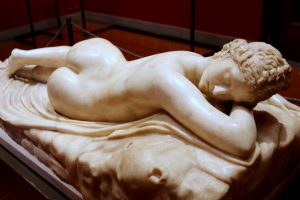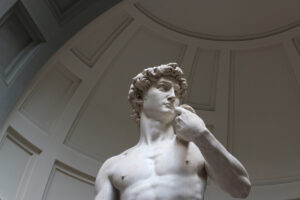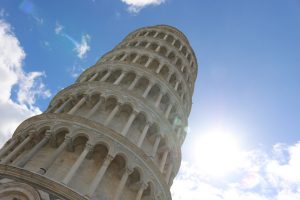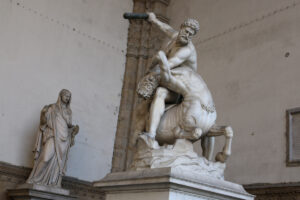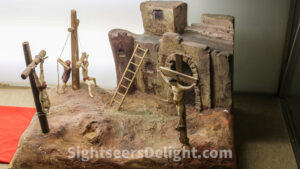Galleria degli Uffizi is arguably the most famous art museum in the world. It makes sense considering Florence is the birthplace of the Renaissance in the 14th century. The museum is located in the Historic Centre of Florence and opened as a museum in 1769. Among its famous works of art is Sandro Botticelli’s 15th century “Birth of Venus.” It also houses works by Michelangelo, Raphael and Leonardo da Vinci.
The Galleria dell’Accademia di Firenze (Gallery of the Academy of Florence) is home to Michelangelo’s famed David statue and is the second most visited art museum in Italy. The museum dates to 1784 and has been home to the David sculpture since 1873. In addition to its most famous work of art, the museum houses paintings by Florentine artists, many from 1300-1600.
Giardino di Boboli or the Boboli Gardens is a vast garden located behind the Pitti Palace. It features a collection of Roman antiquities and sculptures from the 16th through the 18th centuries. The Boboli Gardens were laid out for the wife of Cosimo I de’ Medici, Eleonora di Toledo.
Construction on La Torre di Pisa began in August 1173, and at first the tower did not have a tilt. It wasn’t until workers completed three floors of the tower that its now-famous lean was noticeable, leading to a halt in construction. In 1273, work on the tower began again. However, it wasn’t until 1360 that the tower was completed.
Benci di Cione and Simone di Francesco Talenti built the Loggia dei Lanzi, also known as the Loggia della Signoria, between 1376 and 1382. It is located on a corner of the Piazza della Signoria and adjoins the Uffizi Gallery. More than anything, the building is an open-air museum as it houses many historic statues.
Museo Correr began when Teodoro Correr, a member of a traditional Venetian family, bequeathed his collection to the city of Venice. Correr collected works of art and objects that reflect the history of Venice. The items were housed initially in the Correr family’s Grand Canal palace, which first opened to the public in 1836. In 1922, the collection moved to its current location on St. Mark’s Square, where it occupies the Napoleonic Wing and a portion of the Procuratie Nuove.
Anyone wanting a unique look at the past should look no further than the Museo Criminologico or Crime Museum. Educational and informative, this small museum is also home to some real oddities, such as the Milazzo Cage. This horrible body-shaped iron cage that still contains the remains of its last inhabitant. Kids will assuredly love it.
The Museo dell’Opera del Duomo (or the Museum of the Works of the Cathedral in English) is home to many of the original works of art created for Florence’s famed Cattedrale di Santa Maria del Fiore (better known as the Duomo). The museum, which has been called “one of the world’s most important collections of sculpture,” opened in 1891. Its collection includes Lorenzo Ghiberti’s doors for the Baptistery of Florence Cathedral (called the Gates of Paradise) and The Deposition, a pietà Michelangelo sculpted and intended for his tomb.
The National Archaeological Museum of Naples is home to an extensive collection of Greek and Roman artifacts. The museum houses Roman artifacts from nearby Pompeii, Stabiae and Herculaneum.
Dominican friars founded Officina Profumo-Farmaceutica di Santa Maria Novella in 1221, making it one of the oldest pharmacies in the world. It is part-museum, part-store selling traditional perfumes and elixirs. The Farmaceutica has been open to the public since 1612.

